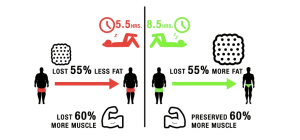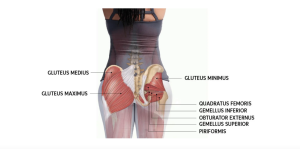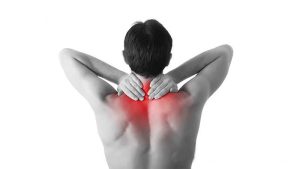Poor posture is today’s new world health problem. It causes more mental and physical health complications than most people realise. The human body was designed to move and not sit in a chair for several hours at a time. Posture is an important part of preventing problems like back, neck, shoulder pain and even depression and fatigue. When the back is straight, the spine is supported and stabilised. When you slouch or hunched over, your spine no longer has the support it needs to stay balanced. There’s a reason your mother told you to sit up straight – poor posture destroys your health.
Bad posture worsens Depression and Stress
When the body remains in a seated position for an extended period of time, slouched and constricted, all of your internal processes slow down. As a result your energy levels decrease and creates a poor mood. Making you feel irritable, tired and aggravated. Slouching causes your body to compress and constrict. Therefore your heart and lungs have to work harder to pump blood and circulate oxygen. This causes stress on your internal organs and muscles. So sitting in an upright position with your shoulders and chest broad makes it easier to breathe.
Causes Digestive problems
Sitting for long periods constricts your heart, lungs and intestines. This can make digestion uncomfortable and cause a lot of issues such as acid reflux and hernias. If you are experiencing digestive distress, you may want to take a closer look at your posture and how much time you are spending sitting each day. Poor posture can cause you to develop that unsightly belly pouch that most of us dread usually attributed to slouching and poor sitting habits.
Poor Breathing
The lungs function optimally when the diaphragm and rib cage can properly expand. Bending forward, backward or sideways invites distorted restricted, shallow breathing. Leaning over squeezes your lungs, making them smaller, and decreasing your breathing volume. Shallow breathing means less oxygen into your system. Less oxygen means less energy. This means It restricts blood and oxygen flow which makes it difficult to breath and speak.
To see how posture affects your breathing, sit with your shoulders and spine in a slouched position in your chair. Exhale and then hold your breath. Now, stand up straight and continue to hold your breath.
Back, Shoulder and Neck Pain
Sitting in a slouched position at your desk for an extended period of time puts a great deal of stress on your upper body. Back, shoulder and neck pain are the most common effects of poor posture. The pain areas include:
- Lower back – 63%
- Neck – 53%
- Shoulder – 38%
- Wrist – 33%
The posture that causes neck and back pain the most is when a person is sitting with their head and shoulders pushed forward. This occurs when you are sitting in front of a computer, with your head jutted forward to read the screen. Since this posture usually takes place in the workplace, it’s important for people to remain aware of how they’re sitting, and to make corrections whenever possible.
Over time, poor posture can cause a misalignment in the spine and lead to even more pain. If the spine is misaligned, weight or stress needs to be redistributed to compensate for your slouching. In addition, it also causes joint stress. Your joints are forced to bear a heavier load, eventually, leading to pain and degradation of the tissues surrounding your joints.
Poor posture can also cause neck pain. Since the neck and skull sit on top of the spine, the curvature of the spine can cause the head’s position to become askew. This causes considerable strain on the neck muscles, which in turn can contribute to neck aches, pains, and even chronic headaches. There are a number of muscles that make up the neck and when these muscles are strained or become tight, they can cause neck pain.
Tension Headaches
Tension Headaches are another side effect of poor posture. Office workers tend to experience more headaches simply because they are putting so much tension and strain on their bodies by sitting all day. Hunching over computers, sitting in cars for hours on end or sprawling on the sofa are some examples that can all lead to back and neck pain which ultimately leads to a headache. Obesity, muscle tone, shoes and pregnancy can make you more vulnerable to posture-related tension headaches as well.
One common reason for headaches, especially tension headaches is muscle tension and tightness. This tightness occurs all over the head and neck feeling like there is a rubber band around your head sometimes. These muscles work hard to adapt to the constraints that are being put on them when your posture is poor. Therefore the tension in your neck, shoulders and spine eventually work their way up to your head and cause a tension headache.
Try this – drop your shoulders as you are reading this paragraph. Try to push them towards the ground. You will notice that they fall a considerable distance. Some others may experience a small fall or none at all. For those of you that their shoulders did not drop at all, sit up and try the exercise again. When you are sitting up straight your shoulders should drop very little, if at all, meaning your posture is good. But If your shoulders did drop alot your posture is poor. This can lead to shortening of some muscles and irritation of your spine and the discs. This shortening will cause that rubber band feeling on the head. Most often this pain is felt right at the base of the skull and if you push on it with your fingers you can sometimes get relief.
Tips on How to Improve Your Posture
- Invest in an ergonomic chair, keyboard and mouse. You want to make sure that it’s providing you with the support you need.
- Get up and stretch every half hour or hour, if possible. This will give your body a break and allow your organs to get the oxygen they need.
- Exercise. Focus on exercises that strengthen your core. A strong core will make it much easier for your body to remain in an upright position.
- Practice yoga. Yoga encourages good posture. Some of the poses require you to keep your shoulders and chest broad. This opens the lungs and allows you to breathe easily.
Just remember our chiropractors at Chiro & Sports Med are here to help promote ongoing wellness by improving spinal and joint function often resulting in a healthier, more active lifestyle.





